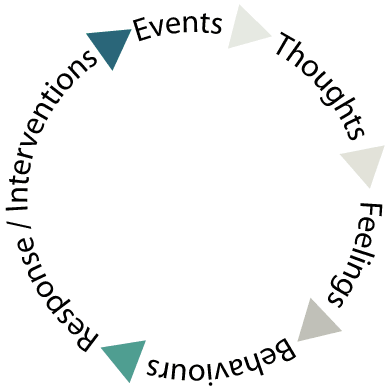
How to Handle Toxic People/Family Members?
Atticus: “You can choose your friends, but you sho’ can’t choose your family.”
…To Kill a Mockingbird (Harper Lee).
Toxic friends? Time to break away. Toxic co-workers? Steer clear. What about when it’s a toxic family member? Well, they bring a whole new meaning to the term ‘nuclear family.’
They say (bad) apples don’t fall far from the (family) tree, but that doesn’t mean you have to let their toxins spread from one branch to another.
It’s never easy when dealing with difficult people, family or not.
Strategies for dealing with toxic people/family members may include….
1. Get Clarity
Time for a reality check particularly when we’re blinded by optimism. We may overlook their latest shenanigans because we want to keep the peace and smooth things over. We find ourselves making excuses for unacceptable behaviour under the guise of hope. “Things will get better when…” We are loyal because they’re blood.
We are often blinded to the reality of long harboured resentments, or possibly because we, or they are holding a grudge which holds no bearing on the present and is an issue of the past.
They are broke and you can’t fix them.
You can only operate from your own moral compass.
Start to see things as they really are. A helpful way to do this is to make a list. On one side, write down the good times – where there was support, they came through for you, and you felt loved. On the other side, write down the bad times – the times they hurt you, ignored you when you needed help, actively undermined you, or tried to control you. Look at the frequency and magnitude.
Seeing your interactions in black and white can help you determine whether your relationship deserves to be thrown a life line, or is essentially a dead duck in the water.
2. Rewrite your part in the family script/drama…
Decide what your role was/is to be in the relationship. If you’re in a family melodrama, maybe it’s time to play another part. Rewrite your role/responses in the family drama. For example “cut” the action scene, change your assigned role from victim to survivor/thriver. Set limits on negative, inappropriate behaviours. This is your life’s story…rewrite the script and ensure ‘the players’ understand boundaries.
Never allow someone to be your priority
while allowing yourself to be their option.
…Mark Twain
3. Set and stick to boundaries.
Test out the new rules of engagement… Toxic families/people are like a bush fire – they need to be contained by drawing some lines. There are many ways to contain how you interact with them; we can set limits on the size of the group, duration of contact, location and more. For instance, with families…visit but stay at a motel, participate in big events rather than intimate gatherings. Emails/texts, if it’s a ‘rant’ ..delete the text; long drawn out phone calls – make them short and if it’s abusive or accusatorial in nature…hang up. Yes, hang up! Nothing delivers a stronger message! Rather, attend to relationships that you value, foster the positives in your life.
Do your best to see your toxic family member’s children or spouse without having them present if need be. Remember it’s not the innocent parties that are at fault for an adult/parent behaving badly. Ensure you have backup support and don’t go it alone. Often a strategy applied by a toxic person is to ‘divide and conquer.’ Choose a neutral setting.
The first thing you need to learn is that
the person who is angry at you for setting boundaries is
the one with the problem .
…H. Cloud and Townsend
4. Surfing the wave. It’s OK to take time out…
Family dramas usually come in predicable waves – holidays, special family events. Once you know the pattern, you can plan. Take extra care of yourself during the height of the storm. You may seek out calmer waters, find a support through the storm or seek shelter and ‘batten down the hatches.’ If your sanctuary is under threat, evict the trouble maker.
5. Cutting ties – short term or long term…
Estrangement is not uncommon, but strangely most people keep it hidden. It’s drastic, but sometimes it’s the best thing to do. It can be triggered by true injustices, or sometimes for petty reasons that no one can remember.
In a study of 900 estranged families the most common reasons for animosity and separation were…
1) A sense of entitlement by sons/daughters, most often demanding money.
2) ‘Objectionable relationships’ like opposing a child’s partner, or ‘bad influences’ etc.
3) Toxic behaviour ie continual situations of cruelty, anger, or perpetual disrespect.
4) Adult kids may cut ties when they feel unaccepted or rejected using the old standby ‘irreconcilable differences.’
Regardless of how or why it is initiated, estrangement drives mixed emotions..
– Feelings of being conflicted
– Possible sense of relief, but then there may be the feeling of sadness or grief.
If someone is mistreating you and tells you
that they haven’t done anything ‘wrong’
listen to them. They are telling you
they are going to continue.
… Jennifer Deisher
Some people won’t change, refuse to listen, or just twist your words and throw them back at you. When this happens, distance is the way to go. After all, when a toxic person/family member overwhelms your life with their issues, it’s OK to cancel your subscription.
Not my circus, not my monkeys
… Polish saying
Understand that the person or family member’s drama is theirs alone, their behaviors likewise. Stepping away from the drama doesn’t make you a bad person. It’s great to be a support system for your family, colleague etc, but it’s equally important that you are taking care of your own needs in the process, and being treated with dignity and respect. We are all entitled to that in life.
Additional article for reading… How to Spot and Stop Manipulators Psychology Today
Books:
Taming Toxic People … David Gillespie
Disarming the narcissist … Wendy T. Behary















